QUESTION
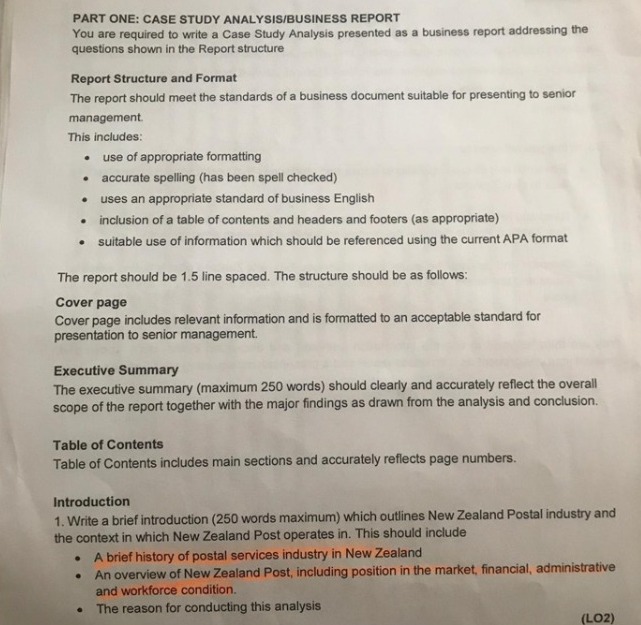
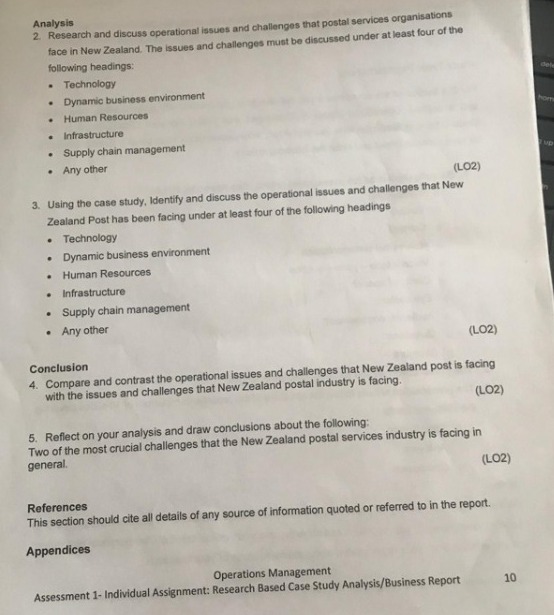
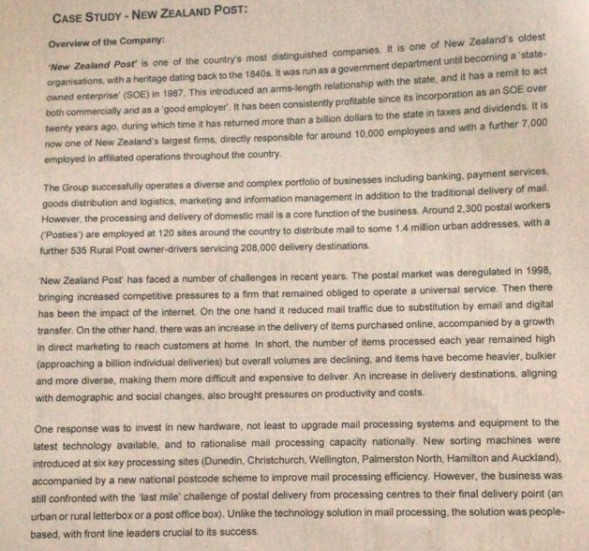
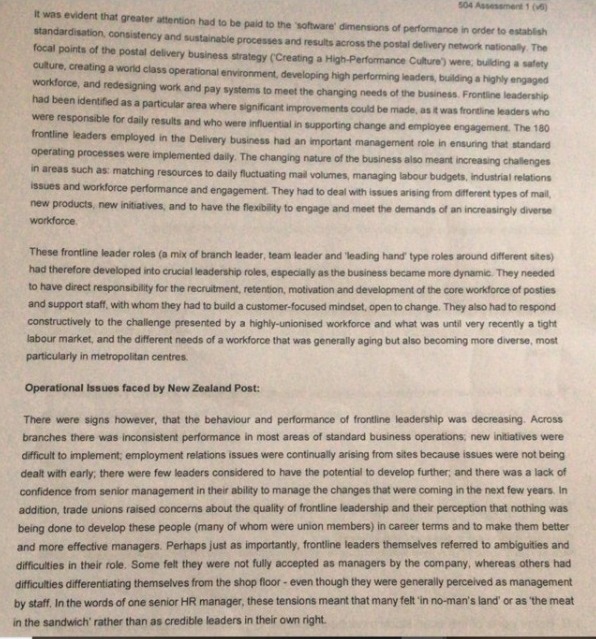
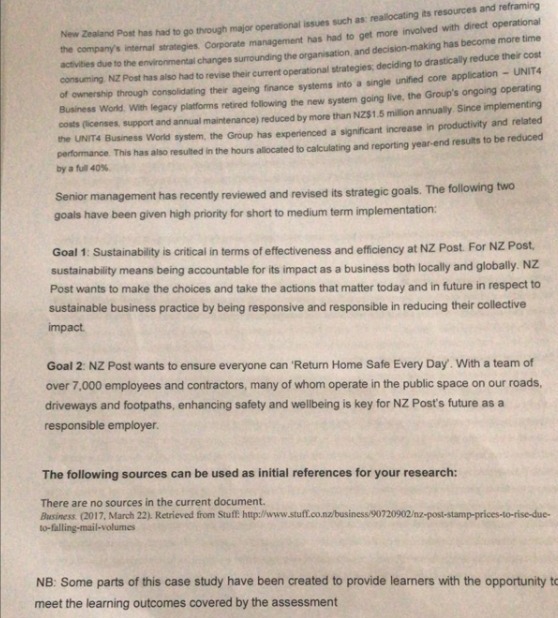
ANSWER
Executive Summary
New Zealand has a long history of postal service, starting with the time when the first whalers, traders, and missionaries used to rely on the passing ships for communication purpose. Over the years, the postal services of New Zealand have always been a burgeoning department for the New Zealand government. New Zealand post has been a market leader in the postal services market of the country. It has introduced some of revolutionary steps in the postal services such as re-classifying mails on the basis of size and not weight, overnight mail delivery service, the Courier post service, etc. The company has been facing significant decline in their revenues in the recent times, which can be attributed to online emails, internet services, and other online communication services (Dene Mackenzie, 2018). There has been a technology shift in the postal services market, from traditional delivery mails to eCommerce and online parcels.
This report deals with the issues and challenges faced by New Zealand post and other postal services, along with their comparison and contrast. Based on our research and findings, Frontline leadership management, technological upgradation, and operation management have been found to be the major concerns for the company. They need to improve their operating system by shifting to digital services and their executive management should build a plan to attract customers and gain their loyalty, and to maintain employee satisfaction. This would indirectly enhance their performance in terms of revenue generation and number of parcels delivery.
The official postal services of New Zealand started in 1840, which faced some controversies due to conflict of controlling power between New Zealand and the British rule. The postal service growth was boosted after the introduction of The Local Posts Act of 1856 and the Post Office Act of 1858. 1st April 1987 marks as one of the most important days in the history of New Zealand postal services, when the post office was corporatized, with its core businesses splitting into three separate companies – Post Bank, Telecom, and New Zealand Post, all of which were set up as a State-Owned Enterprise (SOE). New Zealand Post’s monopoly remained till 1998, when the Postal Services Act was passed, and the New Zealand postal market was deregulated towards being a competitive market. Since then, many companies have been opened in the postal and courier services market, some of which are Freightways, New Zealand Couriers, EMS New Zealand, CourierPost Couriers, Fastway Couriers, Pass the Parcel, DX Mail, etc. New Zealand Post has shares in some of these companies.
The postal service industry is estimated to be around $2 Billion, with an annualized growth rate of –1.9% over the last five years (IBIS World report, March 2019). New Zealand post has been a major player in this market, with its annual net profit after tax being $141 million in 2016, $93 million in 2017, and $13 million in 2018 respectively, and the latest half yearly report of December 2018 showed a net profit after tax of only $7 million (Half yearly report, 2018). The steep decline in the profits and operating revenues has been our main concern behind this research. There have been some administrative and employees’ problems, which have indirectly affected the revenues. We will be studying every aspect of this in our research.
Operational Issues and Challenges that postal services organizations face in New Zealand
Technology has been one of the most important determinants for the current shape of postal services industry. Internet has reduced the number of traditional delivery mails, and online emails are preferred over letters (Sneberger, 2017). The postal services in New Zealand are undergoing through the heating of the digital blowtorch and every postal service is looking to enter into a digitized space. According to the latest half yearly report by New Zealand Post, the online shopping and ecommerce have experienced an increase of 18% YoY for the Christmas period 2018. These days, online emails take seconds to reach and parcels are taking forms of eCommerce parcels rather than letters. In such as a scenario, it has become very difficult for postal service organizations to provide high customer satisfaction and maintain a high efficiency. According to the economic theory of substitution, the substitution effect is determined and decided by the relative prices of goods and services to the customers with comparable utilities (Varian, 2014). This free service by Gmail and other online mailing services have reduced the volumes of physical letters (Business Desk, 2018). Traditional postal service organizations need to reach remote and rural areas for physical delivery whereas online services can be easily carried out in the presence of internet, and with better security system.
The postal service business has dynamically changed from time to time. With the introduction of courier services, the weight of the parcels increased, and then with emails, the service time got reduced drastically. Earlier it was only about delivery of physical letters, but now it has shifted to eCommerce order parcels due to ever increasing online shopping and customers’ digital centricity. Postal service organizations didn’t use to have problems when there were only physical letters. But, now the online deliveries are more irregular and seasonal in nature, which requires sudden allocation of resources so that customers get their delivery on time. Door to door delivery service is another problem for these organizations as there are many places in New Zealand, where it is not easy to deliver packages to customers, which could affect their satisfaction with the service (Wallis, 2017). Customers these days want to track the location and timing of their every delivery, which could be possible through a data-rich 2D barcoding. Further, due to varying tariffs and taxes, it has become very challenging for postal service organizations in New Zealand to maintain their business, and retain their customers, while maintaining a sufficient profit for themselves.
Postal service is a labor intensive industry and it exhibits a low level of capital intensity. Human Resource allocation is a very important field for postal services as their resource requirements are dynamic in nature, and the frontline leaders are expected to have the predictability power for the changing market statistics. The organizations need to redefine the job roles to the employees with proper mentorship programs and modularized on-the-job training. The recruitment strategies shouldn’t be the same as earlier, because they now have to understand the needs of customers and their postal delivery behaviour. Executive Management will need to take leadership and guide teams and managers to achieve better performance than ever. Performance is a function of motivation, ability, direction, and opportunity (Boxall and Purcell, 2008).
Supply Chain and Logistics issues are long known problems for the postal services. The delivery parcels nowadays, vary too much in their shapes, sizes, and weight because of diverse eCommerce and online orders made. Overall, the number of delivery letters have decreased throughout the years (Rutherford, 2017). However, the volumes of parcels increase on the occasions of festivals and weekends, and hence, any unexpected variation in the supply chain affects all of the players. Transportation of letters and parcels remain another problem for the organizations, because of the impact of regular road traffic congestions in New Zealand (Sankaran, 2006). The organizations need to maintain an effective supply chain system, and they should diversify themselves in terms of parcel deliveries for attracting more customers and making profits.
Operational Issues and Challenges that New Zealand Post has been facing
New Zealand Post is also experiencing the need of digitization in the postal delivery service. Customers expect to have a real time visibility for their deliveries with the help of a digital footprint (Hillebrand, 2016). The company has shifted its focus from being a product oriented business to a service oriented business. They have always been one of the trendsetters in this industry (Media Release, 2007). Looking at the technological trends, they should now invest in the digital space which would offer customers unparalleled visibility, control, and choice over their delivery options (Pryde, 2016). The company needs to innovate their logistics and parcel business technology for allowing customers to interact with the company staffs at any point of time. This strategy could be possible for them if they synergize with their courier subsidiaries. They also need to provide a nationwide scanning and tracking facility for their customers, which could enhance the effectiveness of their mobility program.
The postal service business of New Zealand post is on a decreasing trend, which can be seen by their decreasing profit and volumes of letters over the years. Their largest sending customers are now shifting to online communication mediums for their own clients (Reidy, 2018). This has resulted in a massive drop in the volumes of letters being delivered. The rapid changing customer preferences and operational service complexities have led them to question their financial sustainability. Pricing has been a crucial factor for them to decide. On the one hand, they want to be financially profitable, but on the other hand, they need to reduce operational cost and provide cheaper services to their customers. In their latest half-yearly report, the company has expressed their concern of declining volumes with 30 million fewer letters being delivered in the six month period ending Dec 2018 as compared to the same period of last year. However, they are looking towards to solve this sustainability issues and they have recently completed a record breaking no of parcels in the Christmas period of 2018.
New Zealand Post has always relied upon its executive level management to drive their services and lead their business to achieve greater results. The dynamic business environment has led company’s frontline leaders to modify their roles and take charge of the situation for creating a high performance culture. A well organized development program is needed to be planned for the frontline leaders, which would help in their performance analysis and overall growth of their management team (Packard, 2015). The problems of communication skills, planning and technical knowledge could arise in their leaders, but they should be motivated to meet their objectives and identify the best possible delivery option for the company. Moreover, the resource allocation is also something, which they should focus upon. They need to add extra people, customer services staff, vans, etc. during their busy period.
It has been very challenging for the New Zealand Post to deal with the reducing volumes of letters and online shifting of their customers. They have taken a few steps to reduce the calamity such as stopping the no of fast post services and promoting courier services (McSweeny, 2017). Customers these days want a door to door service for their parcels and deliveries, along with a proper 24×7 tracking facility which would enable them real-life tracking. These services are very difficult for NZ post to implement as their no of staffs and service outlets are limited in number, and hence, this has been resulting in decline of customers. People have often complained about the delayed delivery time of their parcels, which puts a great force on their lower players in the chain such as delivery staffs. NZ Post will have to deal with both their customers and their employees to maintain an overall high satisfaction rate, otherwise they would be losing players in the supply chain.
Comparison and contrast between the operational issues that New Zealand post is facing and postal services organization in New Zealand is facing
Technology has been a dominating factor for both New Zealand Post and other postal services organizations. Increasing usage of internet is leading to the digitization of customers, which is further affecting this industry to be digital centric. Moreover, this is also reducing the overall cost for the customers. For example, the online mails sent by the customers come free of cost, whereas couriers follow a cost structure. The time and security of delivery is also better for online mails as compared to the physical delivery of letters or couriers. The dynamic business environment is also impacting all types of postal services organizations. For example, the decreasing volumes of letters has prompted all players to think about alternative options and the delivery of diverse packages has been a major concern for the companies. The competitiveness is growing rapidly in the market, with some players operating offline only, some operating online only, while some maintaining omni-channel operational strategy.
The difference for New Zealand Post lies in their existing and well developed supply chain system. They have a long history of postal service in New Zealand, way beyond its competitors, and this gives them a competitive advantage of understanding their customers pretty well (Business Desk, 2016). They have recently started educating their customers about the delivery system and solve their queries instantly. They follow an omni channel strategy of delivering parcels, and they boast themselves of providing communication and business solutions with the help of a team of over 7000 employees in the country. Their delivery point ranges to 2 million, with a number of outlets across the country, as shown below in the map. Moreover, their leadership team has also proven to be more effective, driven by their specialized frontline leader development program.
Technology, dynamic business environment, and competitiveness in the market have been main challenges for both New Zealand Post and other postal services, but a strong supply chain system backed by a well-organized executive management team and support of employees provide a competitive edge to New Zealand Post over other postal services.
New Zealand Post has been a very successful and efficient company in the past, but in the changing modern world, the postal service industry has transformed its shape, and the business has been digitized by the customers. This has led to a reduction in the overall volumes of letters being delivered by the company, and it has forced to diversify the company’s historic business process. Ecommerce parcels and online orders now dominate the delivery items, with a diversifying range of weights and sizes of parcels. Customers today need a door to door service at an affordable cost, with a cutting edge technology for real-time tracking of their deliveries. These changes are needed to be responded by New Zealand Post, led by their frontline leaders, who will motivate their teams and employees for achieving company’s objectives. The company has responded by introducing some technological changes such as PreCom mobility Service for real-time tracking, FastPost service elimination (Edmunds, 2017), etc. But still, these steps are not enough to attract customers and provide them higher satisfaction. They need to innovate their traditional delivery process and cut down their operational costs to increase the profit.
- Dene Mackenzie, 2018 Feb 24, Online switch hurting NZ Post, Otago Daily Times
- Kiera O., 2019 Mar, Postal and Courier Pick-up and Delivery Services – New Zealand Market Research Report, IBIS World
- Michele Embling, 2019 Feb 20, Half-yearly Report December 2018 Ended, NZ Post Website
- Bojan Sneberger, 2017 Aug 29, The Postal Sector and Digitization: a love-hate relationship, Comtrade Digital Services
- Business Desk, 2108 Jul 03, NZ Post facing biggest-ever upheaval in face of letter decline, NZ Herald
- Varian, 2014 Apr 24, Intermediate Microeconomics, New York: W.W.Norton
- Hannah Wallis, 2017 Oct 30, Mail delivery proving problematic if you live on the wrong end of newly established rural road, NewsNow
- John Purcell and Peter Boxall, 2008, Strategy and Human Resource Management, Macmillan International
- Hamish Rutherford, 2017 Sep 11, NZ Post plans for Christmas parcel boom, while letter volumes drop 11 per cent, Stuff News NZ
- Jayaram K. Sankaran, 2006 Aug 15, The impact of road traffic congestion on supply chains: insights from Auckland, New Zealand, Journal of Logistics
- Annette Hillebrand, 2016 Jan, Technology and change in postal services – impacts on consumers, Wik.org
- Media Release, 2007, NEC Delivers New Postal Automation Technology to NZ Post, nz.nec.com
- Grant Pryde, 2016 Feb 22, Delivering the Future – New Zealand Post’s Journey Into the Digital Age, IRC Institute Library
- Madison Reidy, 2018 Feb 23, NZ Post scrambling to maintain loss-making letters business, Stuff News NZ
- Thomas Packard et al., 2015, An outcomes evaluation of a leadership development initiative, Journal of Management Development
- Jacob McSweeny, 2017 Aug 16, NZ Post intentionally slowed standard post – union, RNZ News
- Business Desk, 2016 Mar 30, Govt plans to stick with NZ Post, NZ Herald
- Susan Edmunds, 2017 Aug 16, New Zealand Post cuts its FastPost service, Stuff News NZ
Looking for best Operations Management Assignment Help. Whatsapp us at +16469488918 or chat with our chat representative showing on lower right corner or order from here. You can also take help from our Live Assignment helper for any exam or live assignment related assistance